Detecting black holes with telescopes and gravitational waves
Although this my third post of the year, this is the first one where I discuss physics in English for 2018. So, best physics wishes for 2018! For a last time, I will write about black holes.
How to better start the year than continuing on the last topic of the previous year? Today, I will focus on the different observational proofs that black holes exist.
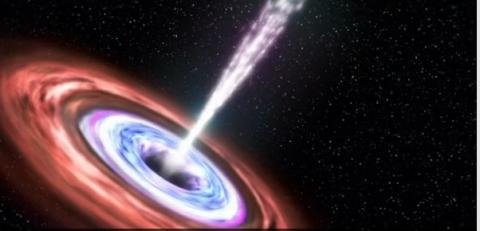
[image credits: NASA]
First, in short and to spoil the post: black holes exist.
But before starting, I must again thanks @suesa for motivating me writing about BH. Yeah yeah I know, only German people may get the joke here.
@mobbs, do you think I am German? :D
I must also thank @muphy who motivated me (without knowing) for the write-up of this third black-hole post by one of his comment.
To summarize the post with a single sentence, until very recently, black holes were only indirectly observed through the motion of stars in galaxies. This of course changed with the start of the gastrophysics era last year.
DETECTING BLACK HOLES WITH THE MOTION OF STARS
Until very recently, the closest available hints for the existence of black holes were indirect proofs coming from the motion of stars in the galaxies. Taking the example of our galaxy, the Milky Way, this is achieved by investigating the trajectories of the stars lying close to the galactic center.
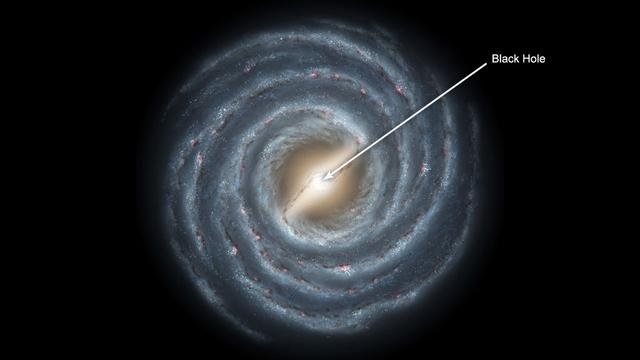
[image credits: NASA]
Those suggest the existence of a very compact and very massive object whose properties do not fit those of any usual astrophysical object.
The only possible explanation consists of a black hole, as it is predicted by general relativity.
By the way, observations of nearby galaxies have shown that black holes in galactic centers are not uncommon.
Fun fact, the idea of a black hole arise in the 18th century by Mitchell who suggested that even light could not escape from a very strong gravitational field. At that time, only Newtonian dynamics was known and we actually needed to wait until Schwarzschild in 1916 to get black holes as solutions of Einstein equations, the master equations of general relativity.
Let us now go deeper into the observational details.
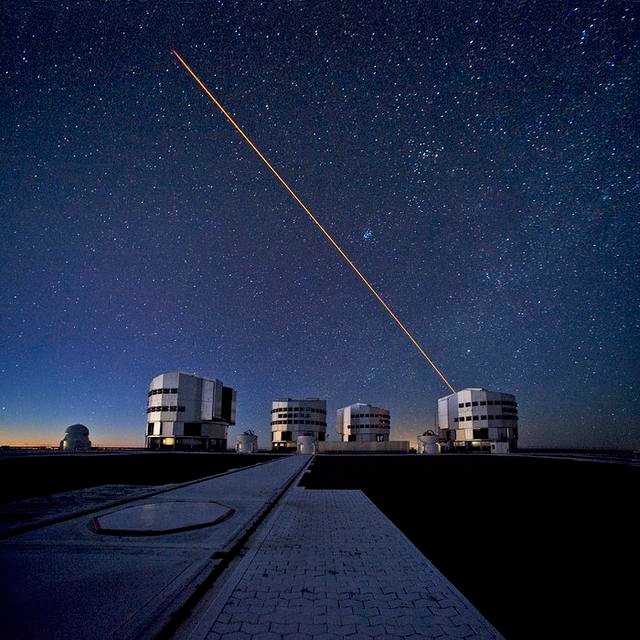
[image credits: ESO]
First, as said above, one needs to monitor fast-moving stars lying close to the galactic center.
There is a bunch of telescopes doing that on Earth, the main ones being located in Hawaii (the Keck telescopes) and in Chile (the VLT telescopes).
Once accurate data is there, Kepler’s laws of planetary motion do the rest and one can derive the mass that must be contained within the area spanned by the orbits of these stars.
The current measurements suggest that there is an object, named Sagittarius A*, that is as heavy as about 4 millions of suns and confined in a region of about 40 millions of kilometers right in the middle of our galaxy.
This object is our black hole. Although it does not looks very compact, imagine putting 4 millions of suns in a circle centered on our sun and of a radius roughly equal to the distance between the Sun and Mercury… Now it looks compact, doesn’t it?
One important point to keep in mind is that we needed more than 20 years of observation to get super precise measurements of those fast-moving stars, and thus accurate derivations of what was going on in the galactic center. The knowledge of today has indeed not been derived in one day!
THE GRAVITATIONAL WAVE REVOLUTION
Very recently, the LIGO and Virgo collaborations have detected their first signals of gravitational waves. And more will be detected in the future.
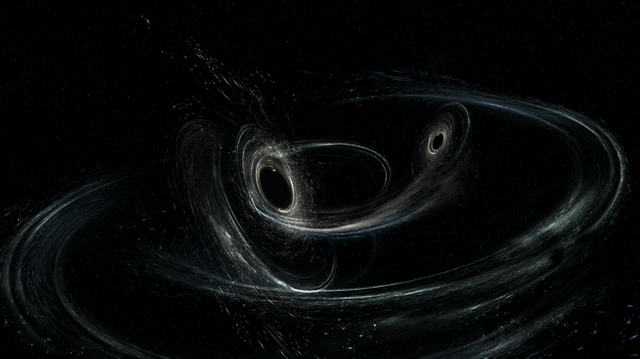
[image credits: LIGO]
The detected signal more precisely consists of the gravitational waves emitted by a catastrophic event, the merging of two massive black holes long ago in the universe history
Detectable gravitational waves indeed require some cosmic events involving super massive and compact objects. Otherwise, the waves are there, but too small to be visible on Earth.
In order to detect the waves, we have used very large interferometers long of several kilometers. Only such a device can help to detect the tiny variations that would be induced by the gravitational waves.
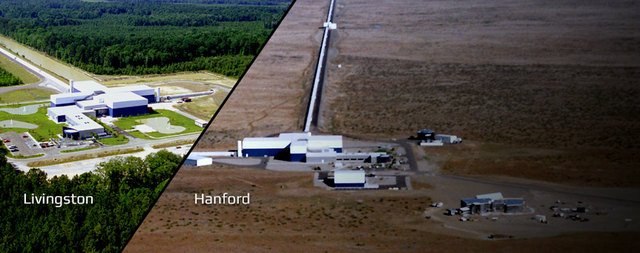
[image credits: LIGO]
To make a long story short, a laser beam is circulating into two very long arms of several kilometers.
In principle, the beam should take the same time to handle a back-and-forth trip in both arms.
However, in the case where a gravitational wave would pass through Earth, tiny variations of about 10-19m occur. Thanks to interferometry, this can recorded by super-precise detectors.
Trying to match data to predictions, it turned out that the only known phenomenon that could explain what had been observed was the merging of two black holes and that data was perfectly matching theory (i.e. general relativity).
The observations thus consisted of the first direct observation of black holes. The door for a new era of black hole studies has thus started (as more data will come), where physicists will be able to investigate black hole dynamics very precisely.
It is nevertheless good to keep in mind that alternative theories of gravity cannot be falsified yet. For this, we need to wait a little bit and have more data.
SUMMARY
In this post, I wanted to finalize my series of posts on black holes. I decided to focus a little bit more on their detection, and on the two ways which we have at the moment to observe and study them.
I discussed first the astrophysical observations of fast-moving stars around a black hole, and then focused on gravitational waves. While the first series of measurements consists of indirect evidence of black holes, the second one consists of their direct observation.
For more information, I recommend the reading of this article and the references therein.
SteemSTEM
SteemSTEM is a community-driven project that now runs on Steemit for more than a year. We seek to build a community of science lovers on Steemit and to promote well written/informative Science Technology Engineering and Mathematics (STEM) postings in order to make Steemit a place for fascinating STEM content.
More information can be found on the @steemstem blog and on the Steemit chat.
Whoa! Mind blown!
Indeed :)
The study of the stomach of physics.
What sort of detector can measure that?
A volcano? Thats all it takes ;)
Gastrophysics is now a term used in astrophysics too, believe it or not. Just try to google the term together with gravitation (instead of nothing or food :D)
LIGO or Virgo. They measure interference pattern in lasers traveling in arms of 4 km. Being super well isolated from the background, they can detect a tiny change in the pattern that would indirectly correspond to this distance.
I guess I need to read more about what exactly these detectors are. I am just surprised by the level of precision (10-19 is pretty small, 1000X smaller then the radius of an electron)
The key is really the interferences. I tiny variation in the length of the arms induce a noticeable (and much easier to observe) interference pattern.
I like reading stuffs about science
Then I can help you as I like writing about science, and physics in particular :)
your answers are ALWAYS nice and hilarious at the same time :))) I like that attitude in you.
^^
Nice post keep it up
I will, don't worry :)
Terrific article ! I am passionate about this subject as I did a master in astrophysics along with my engineering diploma. There was even information I didn't know about : who was that physician called Mitchell in the 18th century ? Same era as Newton, yet I never heard of him, especially the fact he was the first to think about the possibility of black holes to exist. Anyway, I will keep on following your contributions, the STEM seems very interesting ! I made an interesting work on string theory, and its possibilities in order to unify relativity and quantum mechanics, things like that, during my high school years that I will be eager to present here ! Just have to translate it correctly from French to English though.
Thanks for your comment!
Mitchell did a lot of things, not only in physics. The Wikipedia page gives a summary of his accomplishments.
I would be glad to read your string theory articles. Note that you can post them both in French (the #francostem guys will be more than happy about that) and in English, and don't forget to add the #steemstem tag to facilite the finding of your post (see here for more information).
ok I will do this rapidly ! Thanks
"one of the most unsung scientists of all time" ; so that's why I never heard about him I guess; he did very little to promote himself, but that still doesn't mean he was not efficient and intelligent ; he did predict a whole lot of things, and even conceived some way to measure the mass of the Earth. Respect to him. I agree promotion is not everything. Pity now we live in a world full of that. The link even says he was by far the most talented and original scientist of his time. Guess with that he didn't care about losing time in promotion like Newton did for example.
Promotion, or actually communication in general, is very important today. I believe it is crucial that scientists discuss with the general audience about what they are doing and why they are doing it. After all, the general audience is the one paying for research ;)
that's true but at the time, Michell actually preferred to focus on his work ; promotion still doesn't have to take like 60% of the task ; you have to stay reasonable and know what's more important, personally, I don't care about promotion, it's all about production, then it can come as a bonus. There are also people that are just there to get other people's attention for fuck sake ; I mean more out of the scientific world ; but that's the other extreme.
Totally, this is a matter of balance :D
I was anti-black hole my whole life until your post showed me the light ;)
Seriously, its pretty cool that we've only recently been able to get direct evidence of them even though indirect evidence has predicted them for some time.
Why were you anti-BH? I mean, this is general relativity after all.
I'm just joking around. I forgot we're on the internet where many don't believe in the basic notion of space, much less black holes. Either way, I always enjoy your astrophysics posts.
ahaha ok. I am often too serious :D
So there is a black hole at the centre of our galaxy. Does that mean the black hole is feeding on our galaxy or that it is spewing out material for new stars? I've always wondered this!
This black hole has a negligible temperature so that it will take a huge amount of time before it starts to evaporate. In short, it grows over time.
10-19 m is a really small measurements.
Is Ligo and Virgo only able to detect collisions of black holes or the waves created by the movement of only 1 black hole?
You need an event that produce detectable gravitational waves. The merging of two massive black holes is such an event and was actually the best option for detecting the waves. The key point is that you need some acceleration to generate them.
Thanks for this.
I was always interested in black holes. Thing is, they are mostly elusive. We can see what is going on around them but never examine the actual thing due to the whole "laws of nature break".
Still, I am not quite convinced of their true nature or even if they actually exist. Perhaps we are witnessing something different but from our perspective we get all the data distorted.
My pleasure!
Black holes are a prediction of general relativity and what we observed match with this prediction. This is actually the only thing we know that explains the observations.
Now let's move on with your point (that I like a lot): what we observed is something that we have not invented yet. This is possible. But... this not-yet-invented thing will look like a black hole, act like a black hole and could be described like a black hole. In short, it will smell like a black hole. :D
well played :)
THIS is fun. I am an improv teacher and player and we are getting more students and players with a vast knowledge base. This helps me relate to them. They are great students and have a fun sense of humor. But I'll be the first to admit, this is all new, but fun informations. Thank yous.
My pleasure! I like to share information fundamental physics, hoping people will find it useful and interesting enough to be read :)